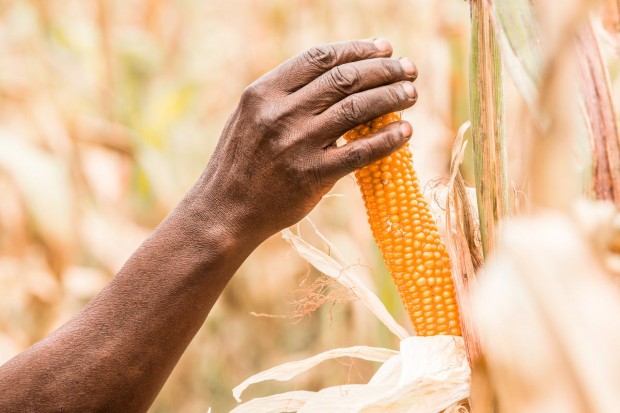Photo : Junior Aklei Chaky from Pexels
In the world of agriculture, the battle against abiotic stress is ongoing and relentless. You might not realize it, but environmental factors like extreme temperatures, drought, and soil acidity can slash crop yields dramatically. Despite this, traditional breeding programs have primarily zeroed in on boosting yields under optimal conditions, often overlooking the resilience needed to withstand these harsh stressors.
But what if crops could be tougher? What if they could shrug off the environmental challenges that typically lead to significant losses? That's where breeding for stress tolerance comes in, a game-changing approach that could revolutionize how we sustain food production. Stick around as we delve into the science behind breeding hardier crops and the cutting-edge techniques pushing the boundaries of agricultural resilience.
The Battle Against Abiotic Stress in Agriculture
In your quest to understand the complexities of agriculture, it's essential to grasp the impact of abiotic stress on crops. Factors like extreme temperatures, salinity, drought, and heavy metal pollution are formidable adversaries against yield stability. To put this into perspective, abiotic stressors are notorious for slashing the quality and quantity of crop production significantly.
Adaptation strategies for plants involve a slew of physio-biochemical adjustments. A plant's defense against these stresses hinges on intricate mechanisms such as hormone modulation, activation of their enzymatic systems, and precise stress gene expression alteration. These complex responses are indicative of the plant's battle to maintain homeostasis and productivity in hostile environmental conditions.
In the face of escalating abiotic challenges, it's crucial for you to recognize the value of advanced breeding strategies. These are not mere improvements but represent survival tactics for ensuring crop resilience. Transgenic breeding, a branch of genetic engineering, emerges as a potent alternative to conventional methods. Over the past two decades, this particular technologically forward approach has demonstrated its prowess in creating plant varieties with enhanced tolerance to abiotic stressors.
Here's an eye-opening fact: a plant under abiotic stress undergoes a surge in reactive oxygen species (ROS), which can wreak havoc on cellular structures and functions. This oxidative burst impacts several critical aspects of plant physiology, including photosynthetic capacity, chlorophyll biosynthesis, and antioxidant enzyme activities. With the climate crisis aggravating these issues, your understanding of how crops can be reengineered for resilience is more vital than ever.

As you delve deeper into the science of breeding for stress tolerance, consider these genetic, epigenetic, transcriptomic, and metabolomic facets that underpin a plant's response to abiotic pressure. The synthesis of this knowledge fuels the evolution of sustainable agriculture, a necessity for feeding the ever-growing global population amidst climate uncertainties.
The Consequences of Ignoring Stress Tolerance in Breeding Programs
When crop breeding programs overlook the importance of stress tolerance, the repercussions for agriculture can be profound. Traditional selection methods, focusing primarily on yield improvement without targeting abiotic stress resistance, can only take crop productivity so far. Economic pressures have historically driven crop breeding, but as challenges like climate change and food security become more pressing, breeding for stress tolerance is no longer optional—it's critical.
Crops that aren't bred for resistance to heat, drought, salinity, and other stress factors are significantly more vulnerable to increasingly unpredictable environmental conditions. Without the genetic traits that confer stress resilience, plants may not survive or produce viable yields under adverse conditions. In fact, sensitivity to abiotic stress can lead to:
• Reduced germination rates and plant vigor
• Lower overall Crop Yields
• Elevated susceptibility to diseases
• Increased reliance on chemical inputs
• Economic losses for farmers
Moreover, ignoring stress tolerance in breeding programs could be detrimental in the long term, with a limited genetic pool unable to cope with the evolving climatic scenarios. Plant breeders must integrate robust stress-response mechanisms into new crop varieties to safeguard against future conditions. The interplay between advanced breeding technologies and an understanding of plant stress responses is crucial for this endeavor.
Shifting the focus to stress tolerance in plant breeding is no simple task, and it demands a collaborative effort between fundamental plant science research and crop pre-breeding. Acknowledging the value of stress tolerance will enable the development of crops that are better suited to withstand environmental pressures, ensuring that agriculture remains sustainable and productive in the face of climatic uncertainties.
Introducing Breeding for Stress Tolerance
When you venture into the field of plant breeding for stress tolerance, you're embarking on a methodology vital for the sustainability of agriculture. The main goal is to produce plant varieties that can withstand harsh conditions, such as extreme temperatures, drought, and salinity. Advanced Breeding Strategies are not just innovative; they're essential for the survival of crops under these challenging circumstances.
Conventional Breeding has been the bedrock of plant tolerance development. This process involves identifying and crossing parent lines with desired traits, like drought resistance or salt tolerance, and continuing with rounds of backcrossing. It's a trusted, proven method that works by tapping into the natural genetic diversity available in breeding lines and landraces.
On the other hand, you have Mutation-based Breeding, a paradigm shift from the conventional. Utilizing chemicals or radiation to induce mutations has allowed for the creation of numerous crop varieties tailored for abiotic stress tolerance. Think of staple crops like wheat, rice, and barley that are now better equipped to deal with environmental adversities.
The innovation doesn't stop there. A highly specific mutation breeding called TILLING helps breeders scan for desirable polymorphisms in the plant genome. This DNA-based selection drastically cuts down the need for phenotypic screening, making the selection process much faster and more efficient. TILLING and its variants, such as EcoTILLING and TILLING-by-sequencing, are increasingly being adopted for their precision.

Bear in mind that technological availability and regulatory acceptance play significant roles in determining the breeding strategy you might follow. With the world turning its eyes to sustainable agriculture practices, developing stress-tolerant crops is a pressing need to ensure food security.
It's important to understand that the path of breeding for stress tolerance is evolving. As crop scientists, you're constantly seeking methods that balance efficacy with environmental and consumer safety. The choice of breeding strategy can make a profound impact on crop resilience and, therefore, the overall productivity of agricultural systems.
Understanding the Science behind Breeding Hardier Crops
Breeding for stress tolerance is a complex science that involves understanding the physiological and genetic mechanisms that empower plants to withstand challenging environmental conditions. As you delve into the science of breeding hardier crops, it's crucial to recognize that stress tolerance is multifaceted, involving attributes like water-use efficiency, salinity tolerance, and the ability to thrive under extreme temperatures.
Plant breeders focus on identifying genetic variants that lead to improved stress tolerance. These variants, or loci, are crucial in developing new cultivars capable of adapting to the stress factors predominantly caused by climatic uncertainties. The breeding programs tend to emphasize traits that ensure yield stability even under less-than-ideal growing conditions.
• Molecular markers
• Population genetics
• Quantitative genetics analysis
These are among the scientific tools and concepts breeders implement to navigate the complex web of stress response in plants. Advancements in molecular markers have revolutionized the way breeders search for stress-tolerant traits, allowing for precision and efficiency in selecting the right genetics for targeted breeding.
Understanding phenotypic plasticity, the capability of a plant phenotype to change in response to environmental stress, is pivotal. It's this plasticity that underlies a plant's adaptability and is a key target in breeding programs. Breeding strategies aim to harness this plasticity by integrating favorable alleles that enhance a plant's resilience and maintain or increase yield under stress.
Agricultural biotechnology furthers the reach of conventional breeding programs by adding sophistication to the process. Techniques such as TILLING (Targeting Induced Local Lesions IN Genomes) help scan the plant genome for natural mutations that confer stress tolerance.
When cultivating crops that can withstand heat stress, it's essential to address the entire plant system. This includes considering aspects like canopy architecture, which affects light interception and temperature management within the plant, as well as root traits that influence water uptake efficiency.
The integration of multidisciplinary approaches in plant breeding programs is essential for success. Soil sciences, entomology, pathology, and climate science all feed into the breeding process to produce crops that not only survive but also thrive under diverse and unpredictable environmental conditions.
Cutting-Edge Techniques for Enhancing Agricultural Resilience
Breeding crops with enhanced tolerance to abiotic stress is a forefront strategy for achieving agricultural resilience. Backcrossing to well-adapted parents in a target environment stands out for its potential to significantly broaden the genetic base concerned with stress tolerance.
When it comes to managing limited water resources, breeding for improved water-use efficiency is critical. This goes beyond merely selecting for survival under drought; it's about optimizing water usage throughout the plant's lifecycle to maintain productivity. You'll find that strategies here are not singular but diverse, integrating a range of traits that enhance water uptake and regulate water loss.
As the soil's salinity increasingly becomes a global concern, creating varieties that can tolerate high salt levels is paramount. Strategies that combine salinity tolerance traits with other stress-resilient characteristics hold promise for boosting yield in saline soils.
Innovations in stress avoidance technology are making waves. By understanding how to match the right genetics with these advanced techniques, breeders can develop robust cropping systems. Such systems harness stress resilience to ensure not just survival but also improved yields.
To accomplish this, modern breeders invest in cutting-edge tools such as Molecular Markers and Population Genetics. These tools serve to dissect complex traits associated with stress tolerance, allowing for the identification and integration of favorable alleles. The beauty of these techniques lies in their precision—they can isolate traits that might be invisible to the naked eye but are vital for a plant's resilience in harsh conditions.
Breeding for heat stress tolerance is yet another critical aspect. This involves considering traits that affect a plant's canopy architecture and root depth—key components that influence a plant's ability to withstand high temperatures.
Your understanding of these techniques empowers you to appreciate the strides made toward securing future food production. Recognizing the need for new funding structures that accelerate the transition from research to practical application is essential. These funds should support both core scientific work and collaborative ventures to fast-track the development of stress-tolerant crop varieties right into the hands of farmers.
Conclusion
Breeding for stress tolerance is a critical step toward securing the future of agriculture. You've seen how leveraging advanced breeding techniques and biotechnology can lead to crops that not only survive but thrive under stress. Remember, the resilience of plants to abiotic stressors isn't just about survival—it's about maintaining yields and ensuring economic viability for farmers. By integrating multidisciplinary approaches and considering the whole plant system, from canopy to root, you're contributing to a sustainable agricultural landscape. As you move forward, keep in mind the importance of technological innovation and regulatory frameworks that support the adoption of stress-tolerant varieties. Your efforts in supporting or utilizing these strategies ensure that agriculture remains productive and robust, even as the environment continues to change.
* This is a contributed article and this content does not necessarily represent the views of universityherald.com









